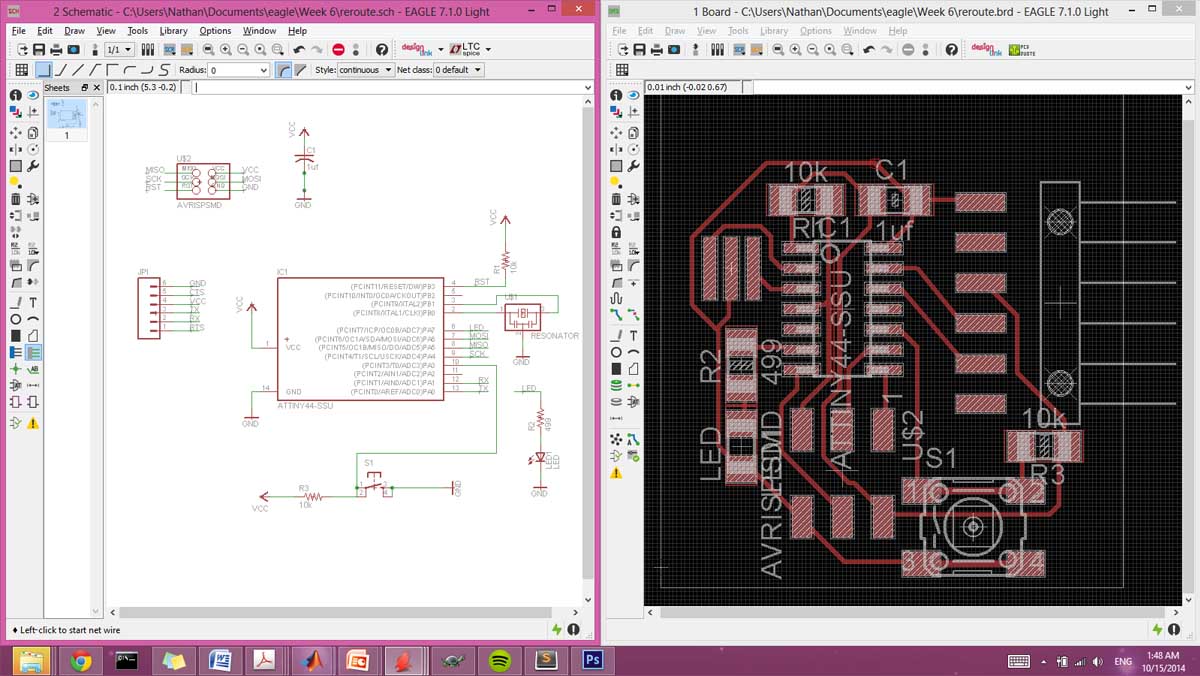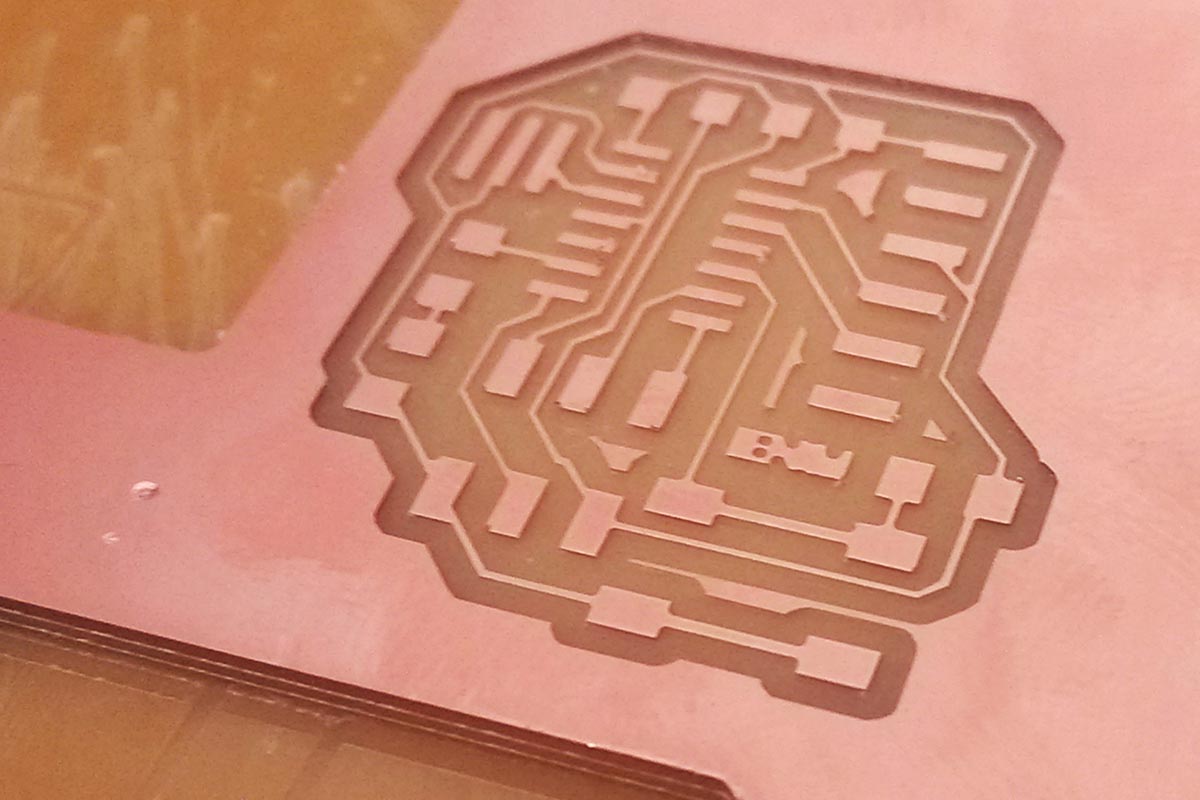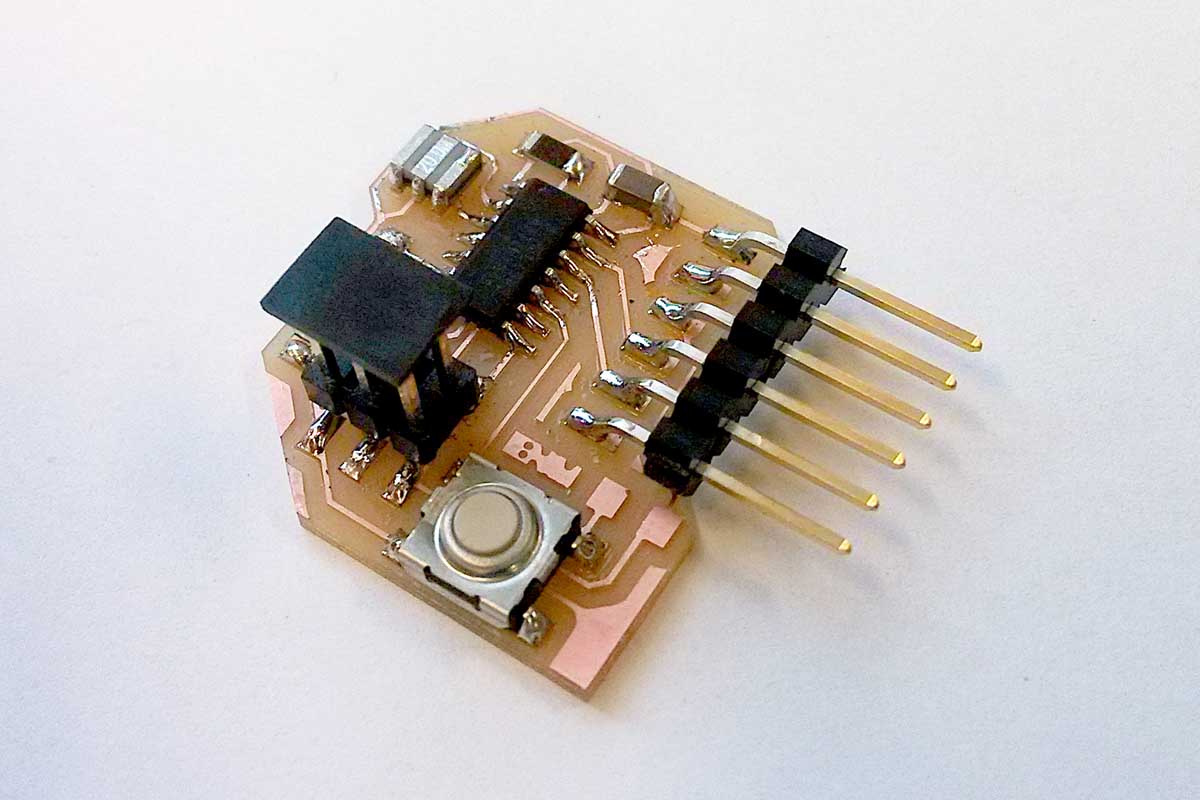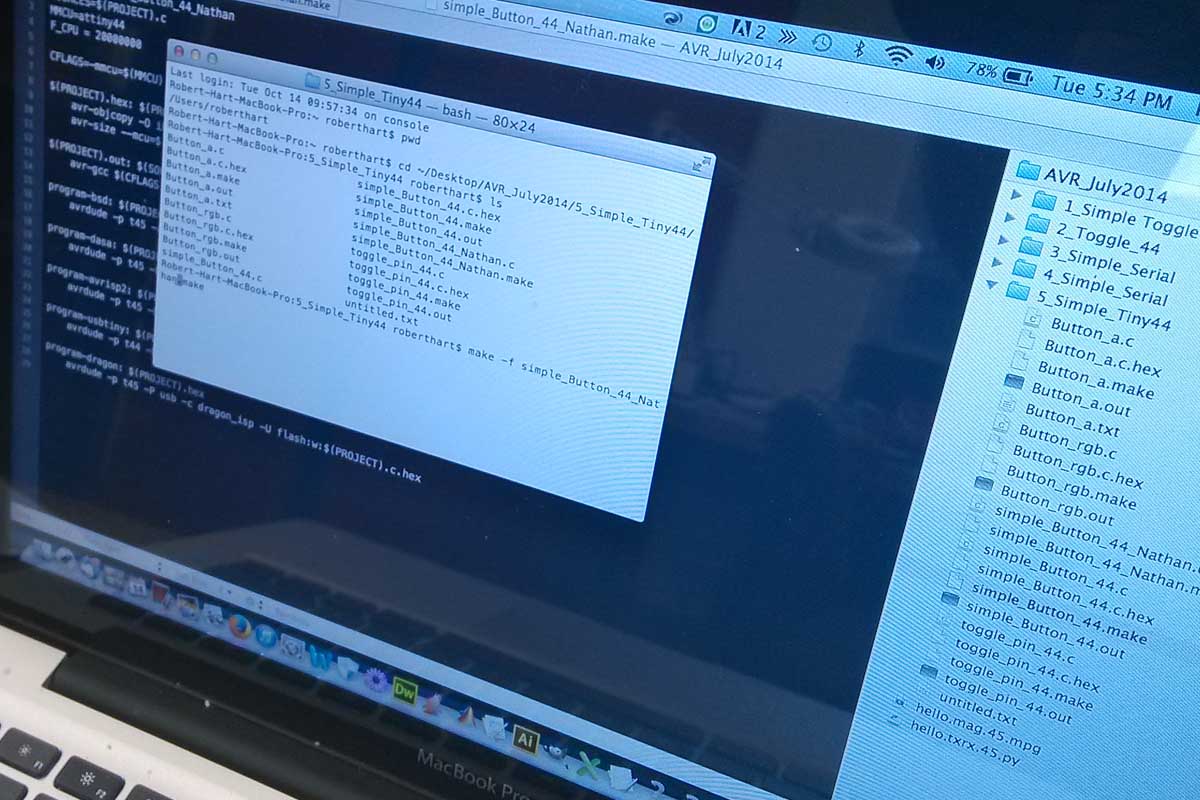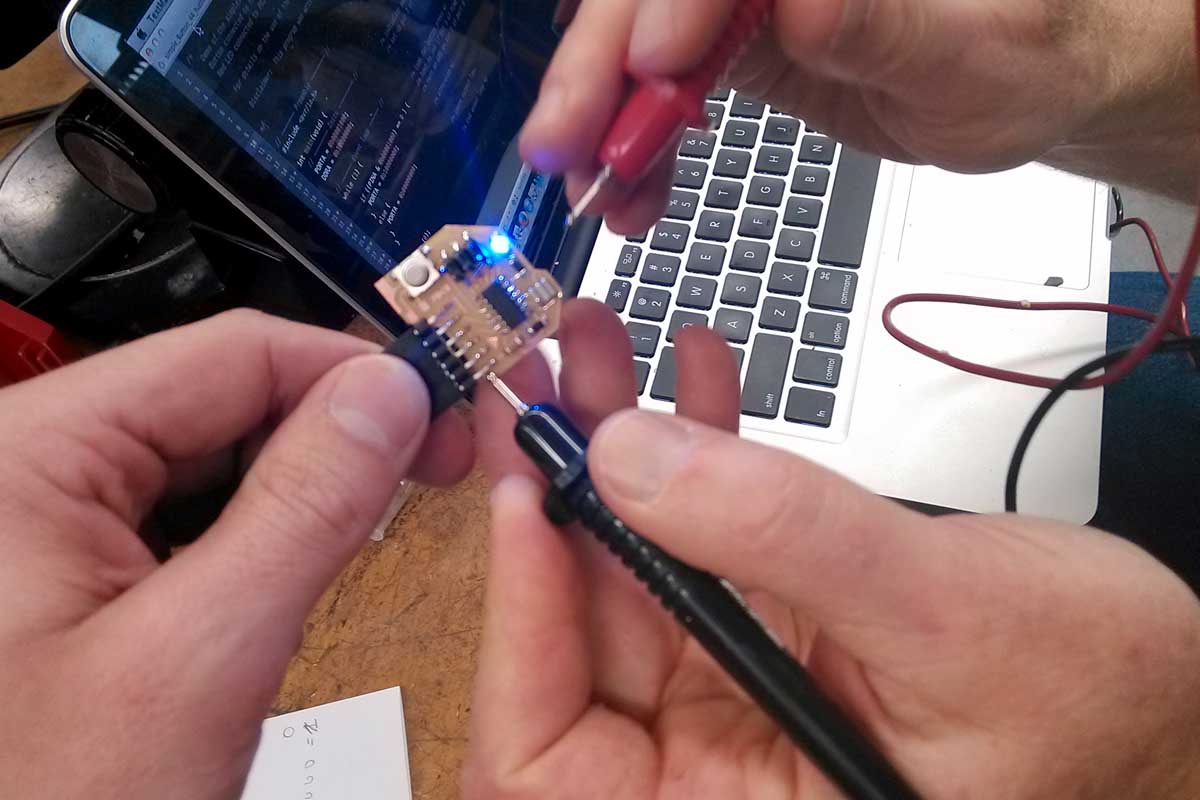Electronics Design
In Week 4 we learned how to mill and stuff the FabISP in-circuit programmer, which was generally a succesful exercise. However, it was using a schematic that was provided and didn't require any skills in electronics design. This week was my first time designing and fabricating a board. Initially, I was thinking to use Grasshopper to create my own platform for evolutionary optimization of PCB design. However, I decided there wasn't time; also, I didn't yet understand enough about what makes an optimal board. I later found the auto-route function in Eagle, and doubted I could produce anything more sophisticated in a week. Also, it seems the difference in performance between an optimal and non-optimal arrangment is actually minimal. Anyway, now that I understand a bit more about the process, I might revisit this idea in coming weeks. But for now, I designed the schematic and traces in Eagle.
